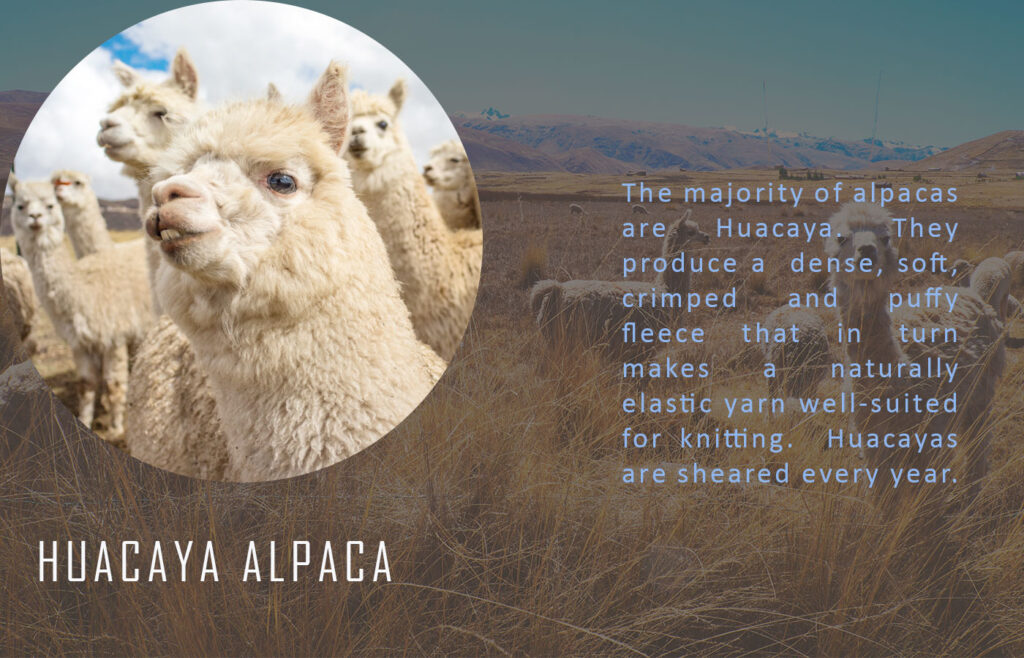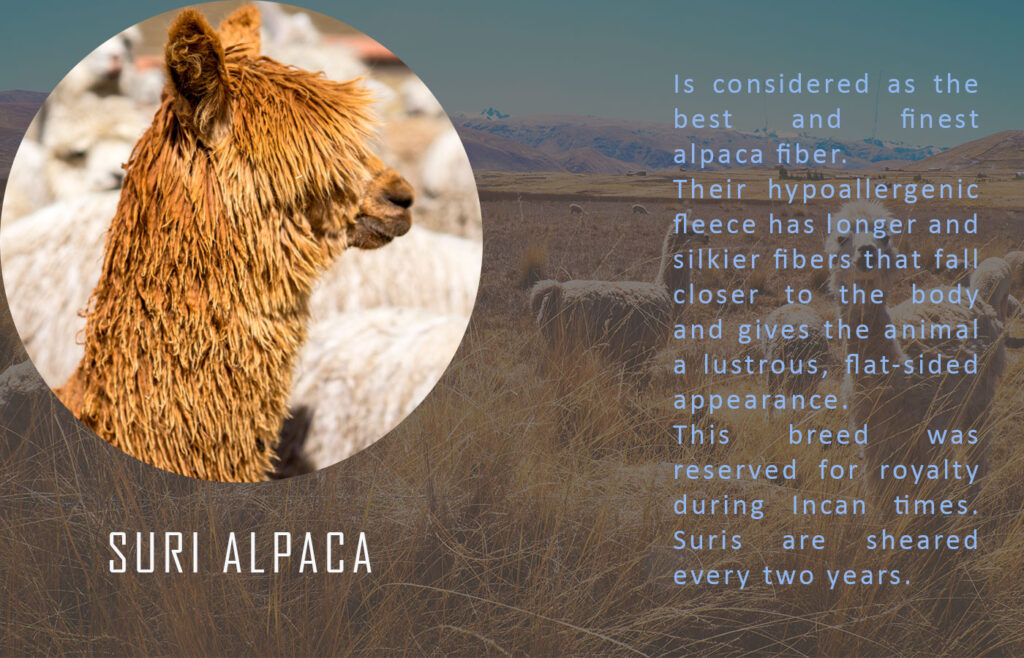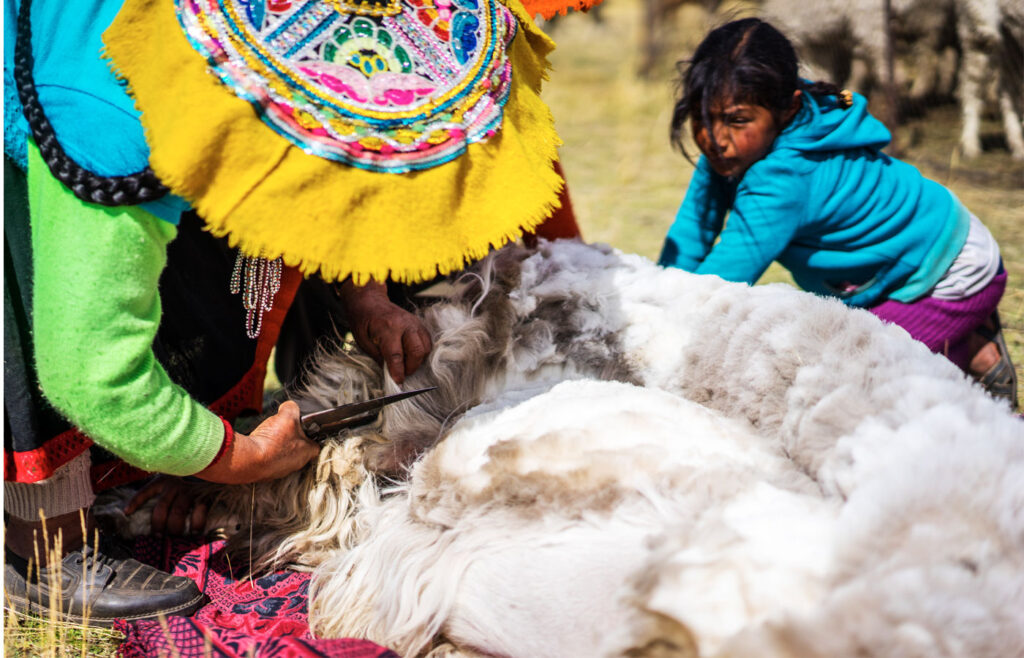Why Alpaca?
Raised high in the Andes Mountains of Peru – 99% by local farmers 22 natural shades of fleece
Naturally hypoallergenic and less irritating to the skin than sheep’s wool it is a soft, durable, luxurious and silky natural fiber.
The alpaca does not have hooves, and its padded feet do little damage to the turf of its range. Similarly, the alpaca chews off plant matter from the ground without pulling or damaging the oots. It does not bother trees and is generally considered to be of ‘low-impact’ to the environment hen compared to other herding animals such as sheep or goats, this fiber is stronger and warmer than sheep’s wool and is second only to mohair in strength. It equals or surpasses typical thermic characteristics of cashmere and mohair.
Types of Alpacas


Alpaca wool shearing process

Baby alpaca wool is considered, when the alpaca has 2 years old after being born, is when the first cut of the wool is made, this is considered as the first quality wool.
So the shearing of alpacas wool begins in December and ends in March, they only have a maximum of 3 months to remove the wool since at this time the alpacas have plenty of fresh food and their wool will sprout very quickly.
After March, is not possible to cut the alpaca wool anymore, because the alpacas can get to die.
The habitat of the alpacas is from 3,800 m.a.s.l. to 5,000 m.a.s.l., and in the Andes, we only have 2 seasons, the rainy season, and the dry season.
The rainy season begins in October and ends April, this is the only production season, these months the farmers take advantage as a maximum for agriculture and cattle raising since there is no system of irrigation on the Andes, only the rains are used.
